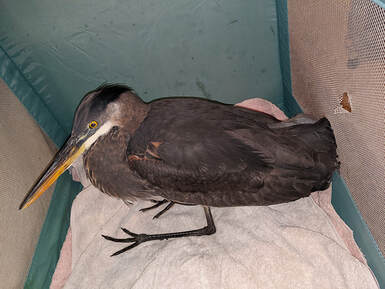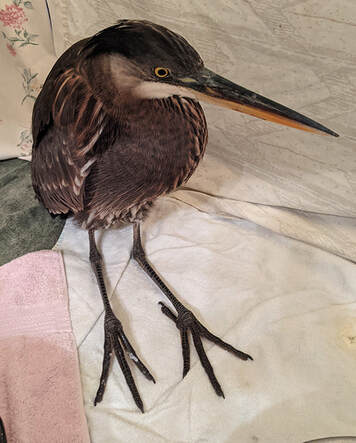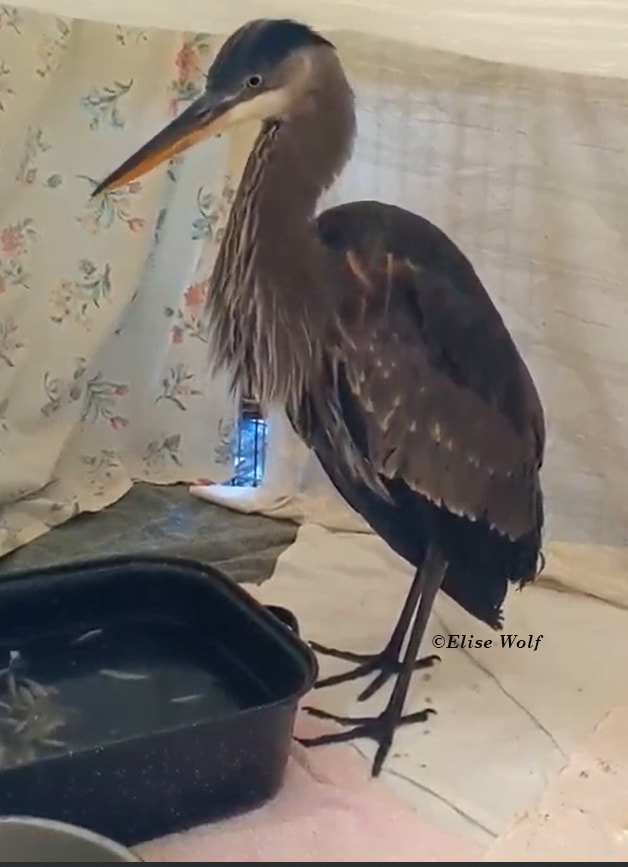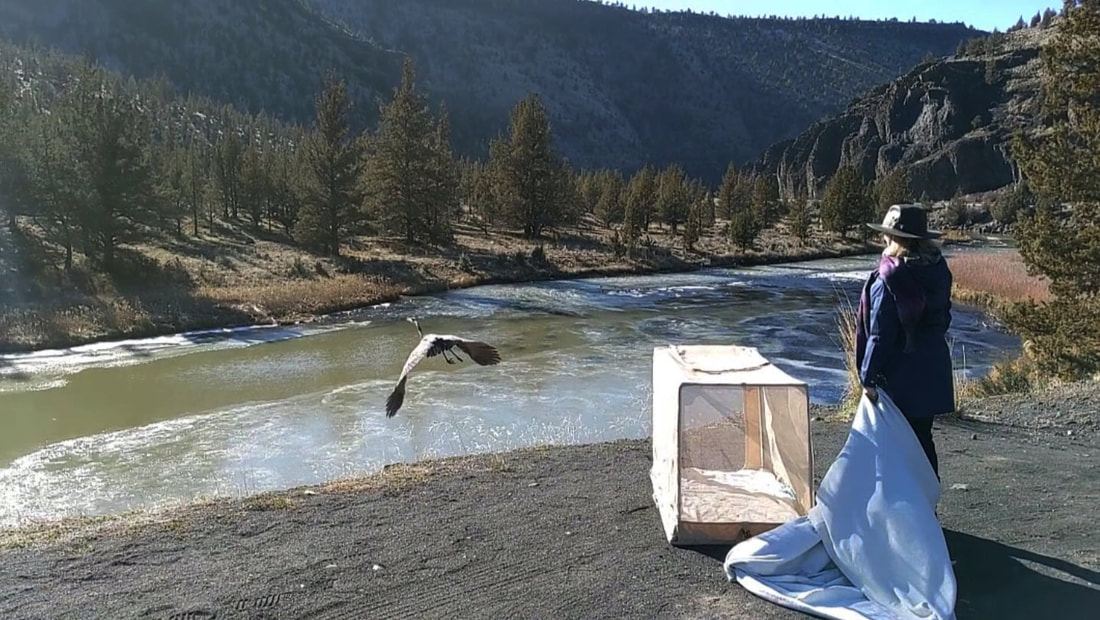|
A Great Blue Heron got a second chance last week. The release and his spectacular flight off was covered on KTVZ News, Bend, Oregon. Link to KTVZ spot on release & interview: https://www.youtube.com/watch?v=1jlI0Wn0m3g Great Blues are our largest heron in North America. They are primarily fish eaters, but will eat just about any animal they can get down their throats - this includes even some birds. In winter, when the lakes and rivers freeze over, they turn to mice and other small animals. You may find one hunting in an open field trying to fill his belly. Young ones, like this bird, can have a difficult time getting enough food when winter really sets in; they must learn to hunt well out of the water and catching mice is definitely a learned skill. This young, first-winter bird was found by a concerned person unable to fly well and huddled against a building. Our volunteer Bud went out and helped capture the bird, a delicate and challenging task given these birds can often still fly a bit. The fact that they have a 5-6 foot wingspan and weight so little means they are can fly until they are very near skin and bones. This results in them only being able to be captured when they are right at death's door, as this young one was.  Great Blue Heron too weak to sit up due to starvation. Great Blue Heron too weak to sit up due to starvation. At half his normal weight (2.75 lbs vs 5.5), the initial days of his treatment and care were challenging. He was emaciated due to him starving for several weeks. As starvation sets in the body turns to its own muscle mass for nutrition. In addition, the organs and intestinal tract can atrophy. This makes getting their bodies going again and digesting and absorbing food a real challenge for us who care for them. It is a slow, delicate process. There is a certain and very specific process we must go through to get a starving bird able to fully eat again. If we fail to follow this process, for example just start giving the bird fish, we can kill them. Patience and knowledge about the birds and this particular form of care is critical.  Great Blue is feeling better, has the strength to sit up on his haunches. Recovery going well. Great Blue is feeling better, has the strength to sit up on his haunches. Recovery going well. This Great Blue Heron juvenile did just fine! He put up with us tube-feeding him for several days, starting out with fluid therapy and certain solutions first, and then moving up to a yummy fish slurry. He was rewarded with fish once he actually started giving us some really nice poops. At the end of care, he was downing about 10 five inch fish a day. All of our patients start out in our large, inside bird rehabilitation room. It was built as large as it is so that we could keep larger waterbirds, like swans or herons, inside in winter. Emaciated or injured birds all need to be kept warm. Their recovery time is far longer if they must produce energy to keep warm. Stress is a factor, but our facility is quiet and remote, so they can just kick back and relax, except for when we come and put a tube down their throats or some other medical care.  Video of Great Blue eating: https://www.facebook.com/elise.wolf.3/videos/372579197960926 Eventually, Great Blue started seriously eating his fish, and leaving us lots of evidence of successful digestion (poops!) in his enclosure (a large 6'x6' padded pen with a large pan of water, which he waded and played with his fish in. LOL). Finally, he got moved out to a large aviary that was set up specifically for a heron, perching logs and large shallow pans of water for wading. Great Blue Heron Factoids:
Comments are closed.
|
AboutNative Bird Care's is celebrating its 10th anniversary! Our main focus is song, shore, and waterbirds. We offer specialized care and facilities for these extraordinary birds.. Archives
July 2024
Categories
|

 RSS Feed
RSS Feed